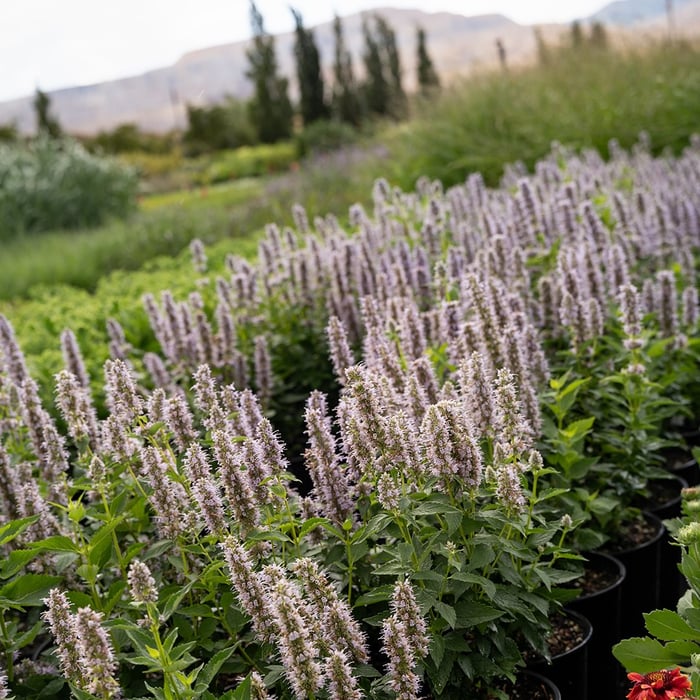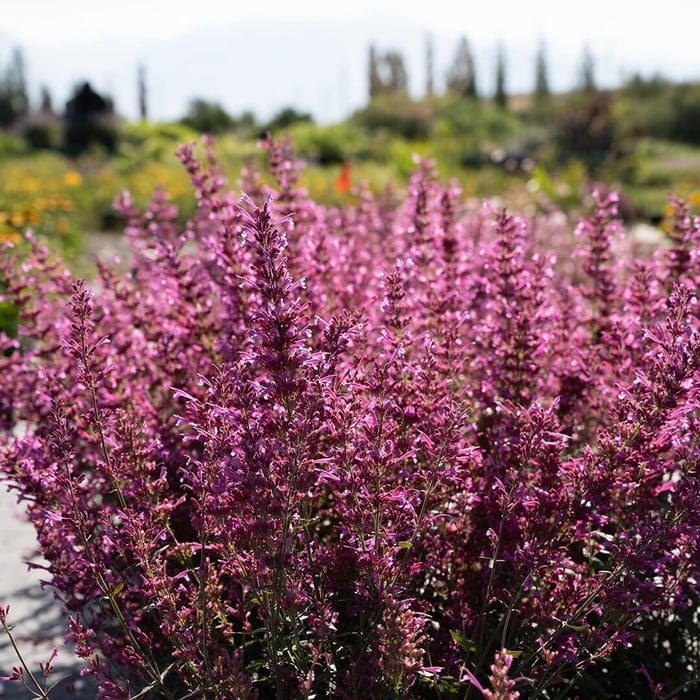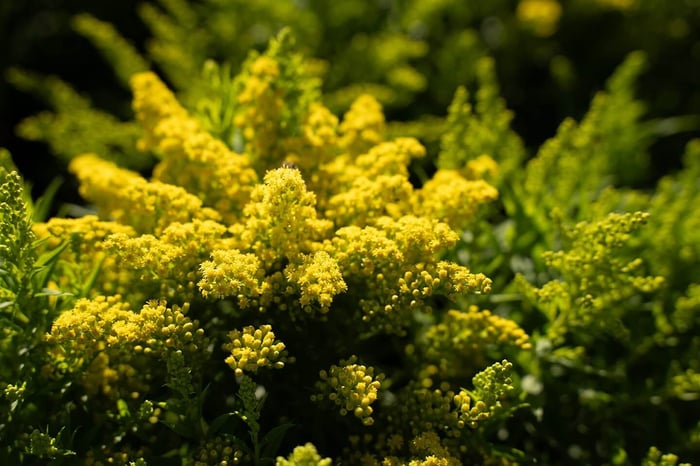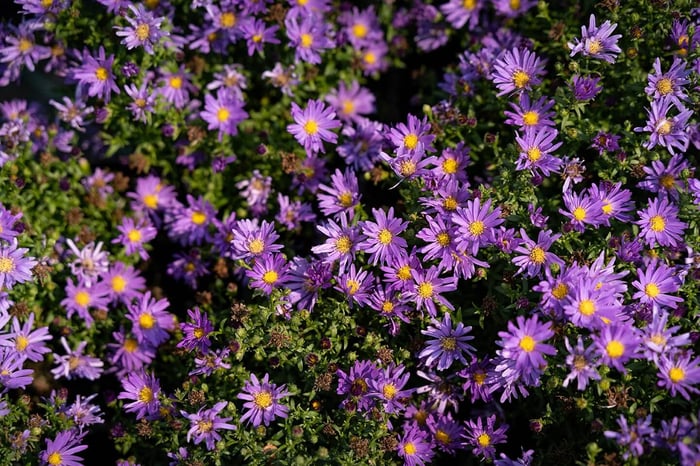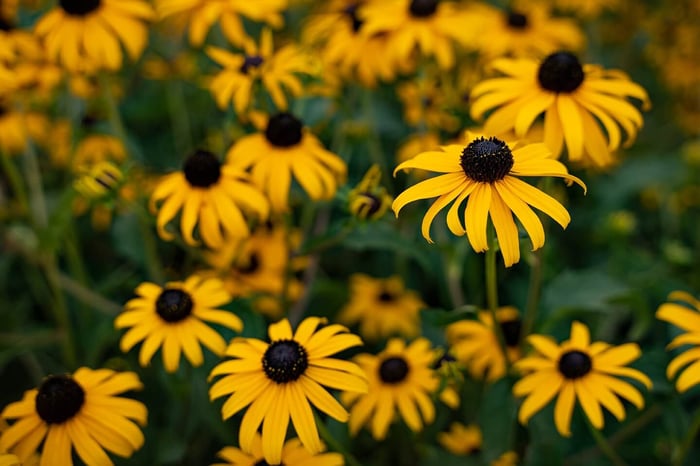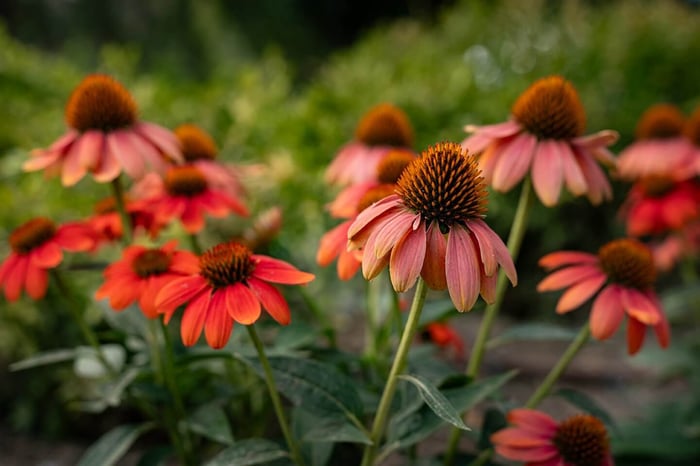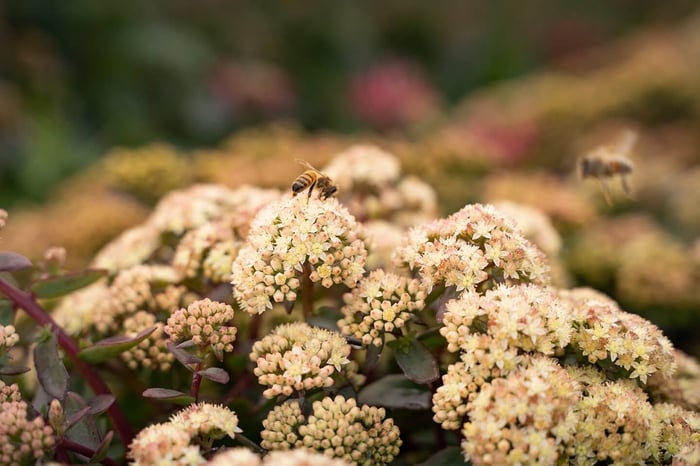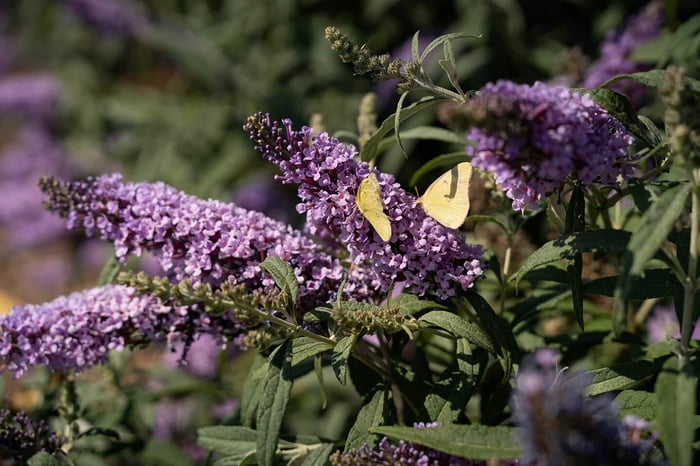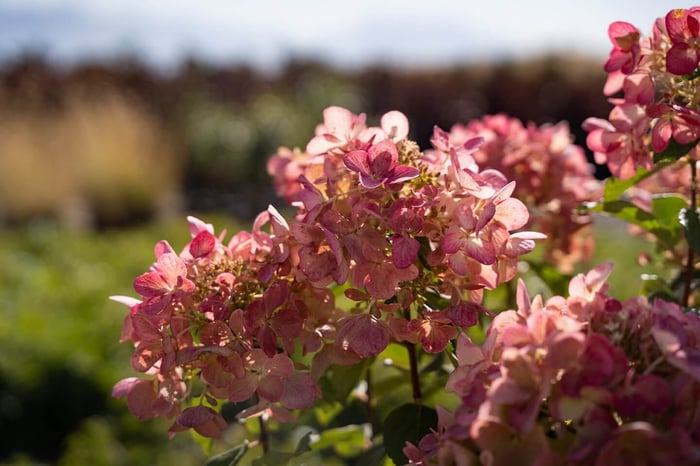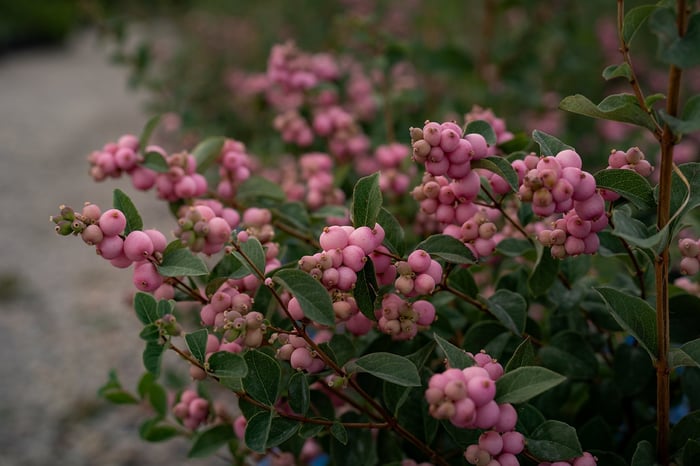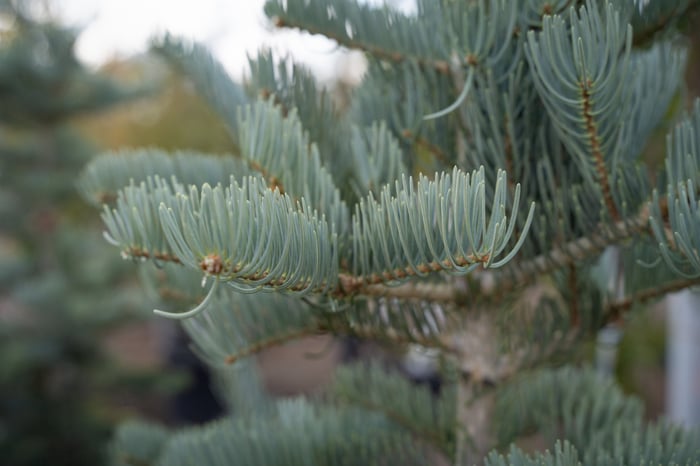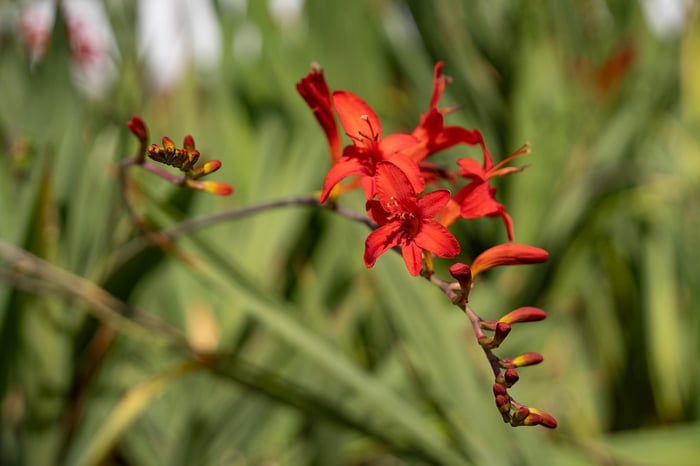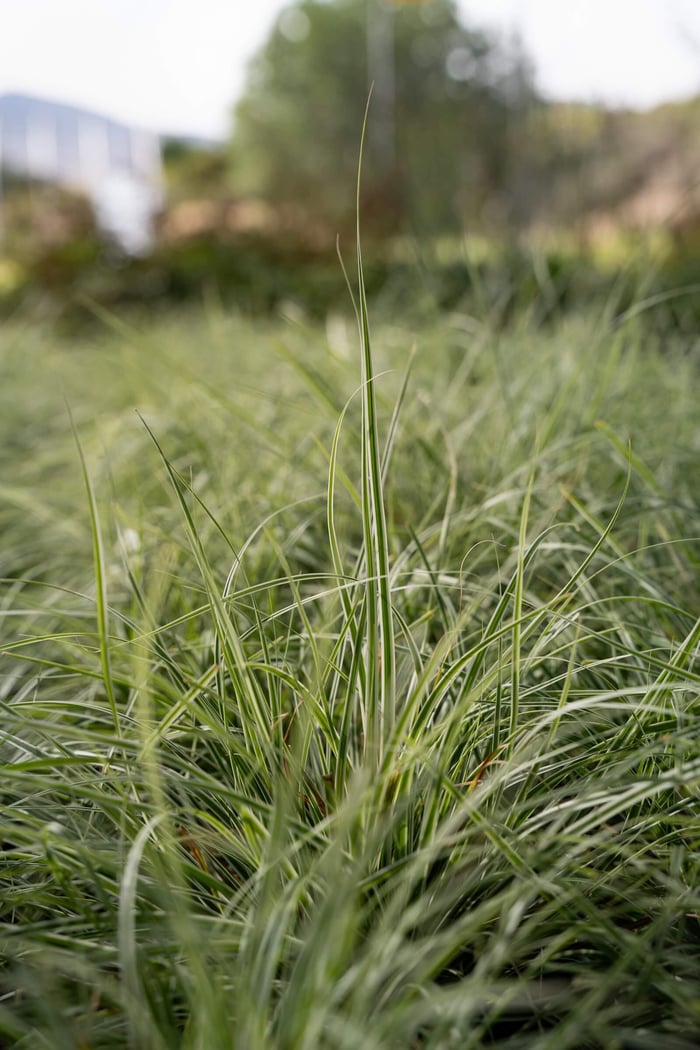Fall is a colorful time of year. As trees transform before dropping their leaves and shrubs and flowers give off one last spark, autumn ignites in color! It’s as if Mother Nature is giving one last burst of energy before drifting off to sleep for winter.
Not every plant brightens in the fall, but several do. Many plants bloom in spring and summer and fade into the background during fall, but there are others that really pop! If your landscape feels a little drab in the fall, now is the perfect time to plant for fall color. New plants thrive when they’re planted in the fall because the soil is still warm enough for root growth and the temperatures are cool, so they don’t have to fight against the scorching heat of summer while they’re getting established. Here are a few of our favorite fall performers:
Agastache
Agastache, also called Hummingbird Mint or Hyssop, is an essential plant for a pollinator-friendly garden, especially during the fall when many other flowering plants are spent. Hummingbird mint has excellent resistance to browsing deer and rabbits thanks to the minty fragrance of its foliage. They draw pollinators from all over the neighborhood and, as their name suggests, they're highly attractive to hummingbirds. Plus, the wide variety of colors they offer is a stunning addition to any landscape.
Goldenrod
Solidago plants (Goldenrod) are easy to grow, with magnificent sprays of tiny yellow flowers. Goldenrod is a bountiful source of nectar for bees and butterflies as it lights up the late summer and early fall garden. Contrary to popular belief, this critical food source for pollinators does not cause hay fever. (It's guilty by association, as ragweed blooms at the same time.) Even better, most of the Goldenrod varieties available nowadays are grown from cuttings and will not re-seed and become weedy. Feel free to add this amazing pop of golden yellow to your fall landscape for years of hassle-free beauty!
Asters
From the Greek word for 'star', Asters are sure to bring a bright burst of color to the garden in late summer and fall with their daisy-like blooms. Asters come in many heights and can be used in rock gardens, wildflower gardens or perennial borders. These plants like well-drained soil and tend to be very cold hardy, blooming late into the fall months. Asters are easy-to-grow in most soils and are an essential source of fall nectar and pollen for bees and butterflies.
Rudbeckia (Black-Eyed Susan)
Rudbeckia (Black-Eyed Susan) are reliable, tough, long-blooming, daisy-like flowers that grow easily in Utah. Most Rudbeckia have golden yellow or orange petals, with a dark center of seed heads. Blooming in late summer through fall, they’re great for perennial borders, cottage gardens, meadows, and native gardens. They also make wonderful cut flowers. Black-eyed Susan are particularly attractive to butterflies, and you’ll love watching seed-eating songbirds balancing delicately as they eat from their seed heads in late fall and winter.
Echinacea
Native Coneflowers (Echinacea) provide us with some of our most beautiful garden flowers. Echinacea is an invaluable source of seeds for songbirds and nectar for bumblebees and butterflies. People even use their roots and leaves as herbs to enhance our immune systems. Today’s Echinacea plants are garden tested and selected for their easy maintenance, vibrant colors, and hardiness in the garden. You’ll love them for the wide variety of color they provide and the wildlife they will attract to your yard!
Sedums
Sedums are an underused landscaping staple. These low-maintenance perennials thrive in full sun and poor soil, making them ideal for Utah gardens! Notable for their mesmerizing, season-long color, creeping sedums are perfect for filling in crevices in the rock garden, while upright varieties add architectural interest and stunning color!
Butterfly Bush
Buddleia, or Butterfly Bushes are a wonderful addition to any landscape garden. They are available in a variety of sizes from 8 feet tall and wide to 2 feet tall! Some butterfly bushes bloom in the spring, but most bloom in summer and continue through the cold fall months! These beautiful flower panicles are available in an array of colors and attract bees, butterflies, and even humming birds.
Hydrangeas
Many people believe that hydrangeas don’t grow in Utah, but that couldn’t be further from the truth. You likely won’t get blue hydrangeas to grow in our soil, but those that start out white and turn pink and red love it here! And there are dozens to choose from, including panicle hydrangeas, smooth hydrangeas, big leaf hydrangeas, mountain hydrangeas, and even oak leaf varieties! These stunning plants begin blooming in the summer and the flowers just grow larger and more impressive as the season progresses. They don’t drop their flowers during the season, they just continue to grow until fall, when they turn from white to pink and then fade to a beautiful bolden grown through the winter! The hydrangeas in our nursery are usually covered in pollinators, from native bees to butterflies, all season long! You’ll love them in your yard!
Snowberries
Symphoricarpos, or Snowberries, bloom in the summer, attracting hummingbirds and bees, but in the fall they load themselves down with attractive berries that stay on the plant well into the winter. These striking plants attract birds during fall and winter that feed on their beautiful berries! You can get snowberry plants that produce either pearl-white berries or delicate pink berries. You’ll love the pop of color they bring to your yard! Use some caution, however, because these berries are not good for people or pets.
This is just a taste of the many plants that you can add to your landscape for a pop of color in the fall. If you have any questions, we’re always happy to help. We’re never farther than a phone call or click away! Good luck and happy planting!

